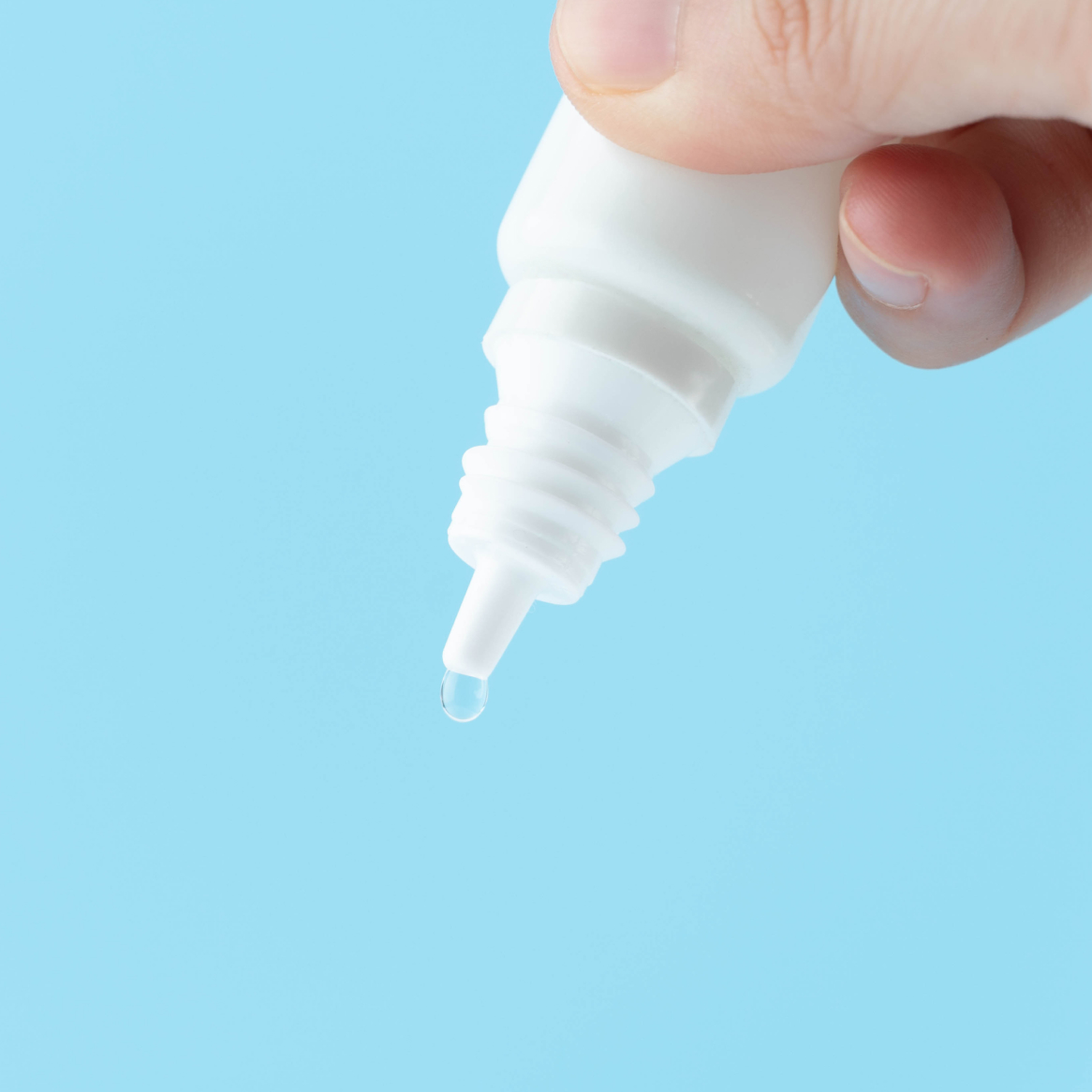Red eyes happen when the white part of your eyes (the sclera) gets red or pink. This can look like a bunch of wavy red or pink lines across your eyes or a red splotch. In other cases, the sclera can have a red or pink tinge. Red eyes often occur with other symptoms, such as burning or itchy eyes, eye pain, blurred vision, or watery eyes.
Red or “bloodshot” eyes aren’t usually a big deal, but they can be uncomfortable. And sometimes, they can be a sign of an underlying eye condition. In some cases, red eyes can be a medical emergency.
In this guide, we’ll discuss common causes of red eyes. Then, we’ll give you guidance on what you can do to get rid of the redness, including when to see an eye doctor for help.
What Causes Bloodshot Eyes?
Red eyes generally occur when the tiny blood vessels in your eyes expand and become more visible. All sorts of things can bring this about, including irritants in the environment, eye injuries, and eye conditions. Some people get red eyes from substances like alcohol, from being pregnant, or as a side-effect of medication.
Let’s take a look at some common causes of red eyes.
Allergies and Sensitivities
Eye allergies of all kinds can cause red eyes. These include seasonal allergies, like those triggered by outdoor allergens such as pollen or grass. Perennial allergies to things like pet dander, mold, or tobacco smoke can cause red eyes, too. Some food allergies, plus sensitivities to environmental irritants like pool chemicals or perfume, could also be your red-eye culprits.
Blepharitis
Blepharitis is an inflammation of your eyelids, which may get red, scaly, and swollen. The whites of your eyes can get red, too. Blepharitis isn’t contagious, but it is a chronic condition. If you have oily skin or other dermatological conditions, like rosacea, you’re more likely to have it.
Blepharitis needs to be managed. If left untreated, it can lead to eye infections like styes or conjunctivitis (pink eye).
Contact Lenses
Sometimes, wearing contact lenses for too long, such as by sleeping in them, can result in red eyes. It’s like your eyes are protesting—telling you they need a break from contacts. Eye doctors sometimes refer to this inflammation as contact lens-associated red-eye or CLARE.
Sub-par lens care and hygiene can also cause redness in the eyes. Damaged or poorly fitting contact lenses may bother your eyes and lead to eye redness. Or you could be allergic to the contact lens solution you’re using.
Corneal Abrasions and Ulcers
A corneal abrasion is a scratched cornea. Aside from redness, a common symptom, a corneal abrasion can be quite painful. If a corneal abrasion isn’t treated, it could lead to a corneal ulcer, an open sore caused by infection. In case of severe infection or delayed treatment, a corneal ulcer can lead to vision loss or even blindness.
Dry Eye
Dry eye, also called dry eye syndrome, occurs when eyes lack quality tears to lubricate them. Along with the dryness, the eyes often become inflamed.
Eye Strain
Your eyes can get stressed out and tired from working hard, just like any other body part can after a workout. Eye strain and its techy cousin, computer vision syndrome, are known to give some people red eyes. If you experience red eyes after a prolonged activity involving a lot of close-up focus, eye strain or computer vision syndrome may be the reason.
Glaucoma
Glaucoma is a serious eye disease. With glaucoma, the eye can’t drain fluid properly—the fluid builds up in the eye, increasing eye pressure, which can lead to vision loss.
Often, glaucoma comes on gradually. But, a severe type of glaucoma, acute angle-closure glaucoma, can happen suddenly with possible symptoms including extreme headache, eye pain, and eye redness. Acute angle-closure glaucoma is a medical emergency.
Pink Eye (Conjunctivitis)
Pink eye, true to its name, is an eye condition usually involving some degree of pink or red eyes. The cause of pink eye tends to be bacteria or a virus. It’s often highly contagious, but it typically isn’t serious.
Stye or Chalazion
A stye is an infected oil gland that forms a bump, usually on the edge of your eye. A chalazion can look a lot like a stye, but it isn’t the same thing. The main difference between a stye and a chalazion is that a stye is an active infection, while a chalazion is not. However, both can cause the affected eye to get red.
Subconjunctival Hemorrhage
A subconjunctival hemorrhage is a broken blood vessel under the conjunctiva, the clear coating of the eye’s surface. It could result from all sorts of trauma to the eye—from getting hit in the eye with a ball to rubbing your eyes too vigorously to experiencing a particularly explosive bout of vomiting.
When you have one (or more) of these broken blood vessels, the result can look scary, like a bright red blotch on the eye. But usually, they’re harmless and go away by themselves within a couple of weeks.
Uveitis
Uveitis is an inflammation of the uvea, the middle layer of tissue in your eye. Uveitis tends to come on suddenly, with symptoms that can include red eyes, extreme pain, and blurry vision. Sometimes, uveitis occurs as a result of an infection or eye injury. Other times, no immediate trigger can be found. Uveitis is a medical emergency that can lead to vision loss.
Treatment for Red Eyes
How do you get rid of red eyes? The short answer is: It depends on why they’re red. Because so many possible reasons exist, it’s best to ask your eye doctor how to treat your red eyes. Your eye doctor might prescribe eye drops or recommend over-the-counter drops like artificial tears to treat your red eyes.
However, certain home remedies may help soothe your red eyes and give you some immediate relief, such as:
- Applying a warm or cold compress: Soak a washcloth in warm or cold water and place it over your closed eyes for up to ten minutes.
- Avoiding the trigger: If your red eyes are caused by allergies or sensitivities, eliminating the allergen or irritant as much as possible can go a long way toward diffusing the redness.
- Cleaning eyelids and flushing eyes: Gently cleaning your eyelids and flushing your eyes with saline solution might wash away irritants.
- Resting your eyes: Give yourself a break from digital screens or other eye-intensive activities, and refrain from rubbing your eyes.
- Taking out contact lenses: Switch to eyeglasses for a few days while your eyes heal.
Take Red Eyes Seriously
Red eyes are most often a symptom of a minor eye issue. But red eyes may indicate a serious condition that could impact your overall eye health and vision.
If you have red eyes (or one red eye), the best thing to do is to contact an eye doctor. If your red eyes are accompanied by symptoms like extreme headache, eye pain, or vision changes, seek immediate emergency medical treatment.





